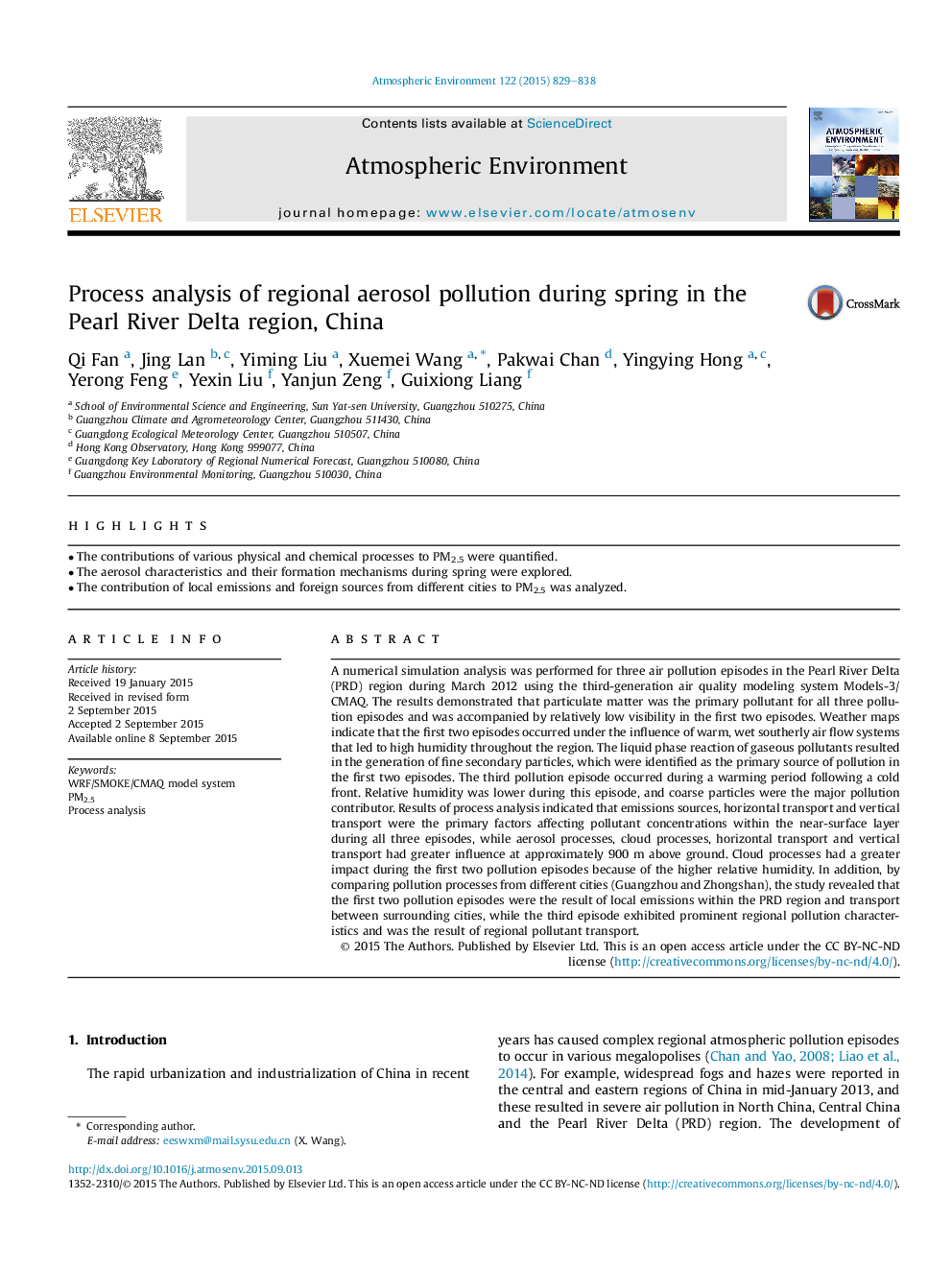| Article ID | Journal | Published Year | Pages | File Type |
|---|---|---|---|---|
| 6337131 | Atmospheric Environment | 2015 | 10 Pages |
Abstract
A numerical simulation analysis was performed for three air pollution episodes in the Pearl River Delta (PRD) region during March 2012 using the third-generation air quality modeling system Models-3/CMAQ. The results demonstrated that particulate matter was the primary pollutant for all three pollution episodes and was accompanied by relatively low visibility in the first two episodes. Weather maps indicate that the first two episodes occurred under the influence of warm, wet southerly air flow systems that led to high humidity throughout the region. The liquid phase reaction of gaseous pollutants resulted in the generation of fine secondary particles, which were identified as the primary source of pollution in the first two episodes. The third pollution episode occurred during a warming period following a cold front. Relative humidity was lower during this episode, and coarse particles were the major pollution contributor. Results of process analysis indicated that emissions sources, horizontal transport and vertical transport were the primary factors affecting pollutant concentrations within the near-surface layer during all three episodes, while aerosol processes, cloud processes, horizontal transport and vertical transport had greater influence at approximately 900Â m above ground. Cloud processes had a greater impact during the first two pollution episodes because of the higher relative humidity. In addition, by comparing pollution processes from different cities (Guangzhou and Zhongshan), the study revealed that the first two pollution episodes were the result of local emissions within the PRD region and transport between surrounding cities, while the third episode exhibited prominent regional pollution characteristics and was the result of regional pollutant transport.
Keywords
Related Topics
Physical Sciences and Engineering
Earth and Planetary Sciences
Atmospheric Science
Authors
Qi Fan, Jing Lan, Yiming Liu, Xuemei Wang, Pakwai Chan, Yingying Hong, Yerong Feng, Yexin Liu, Yanjun Zeng, Guixiong Liang,
